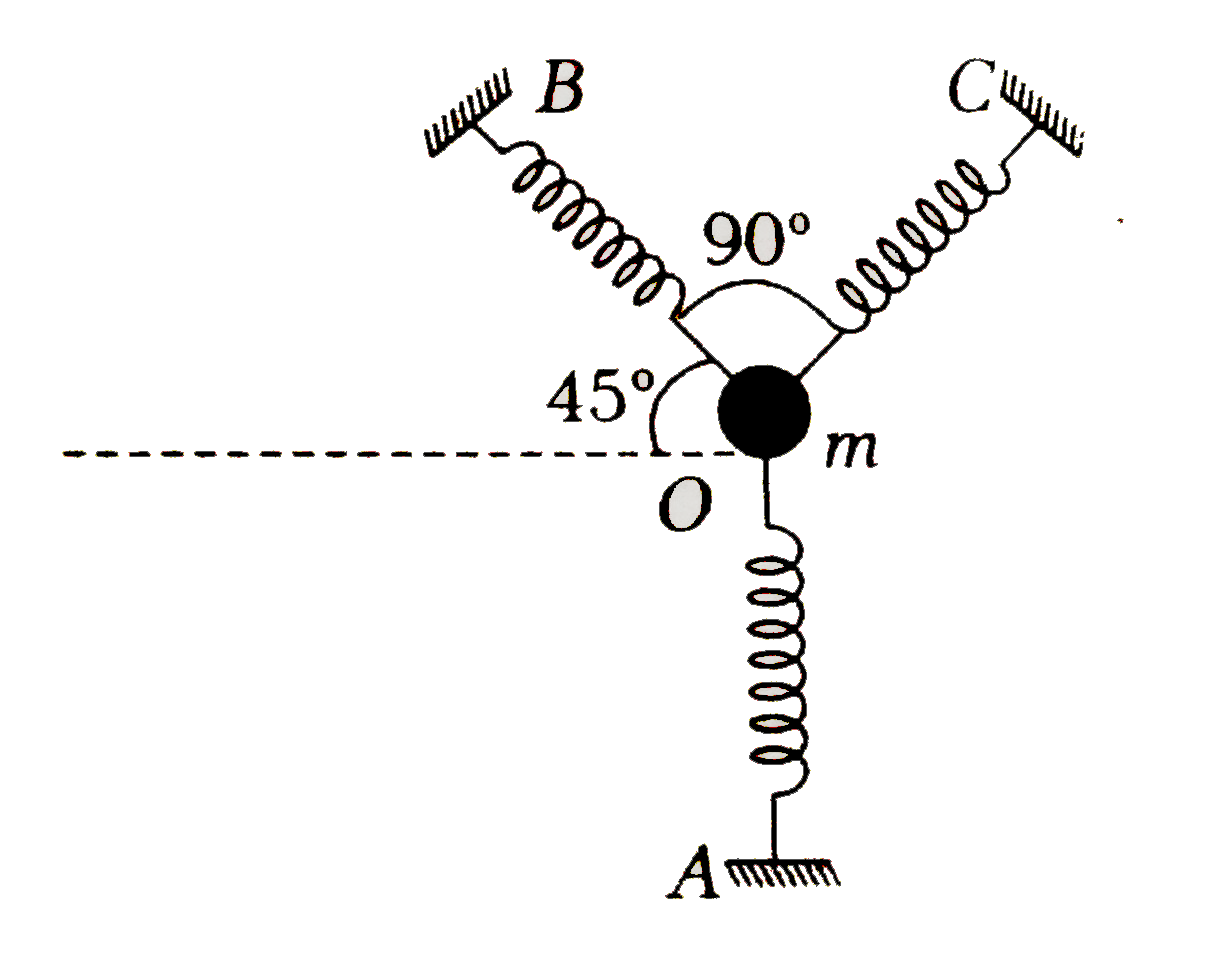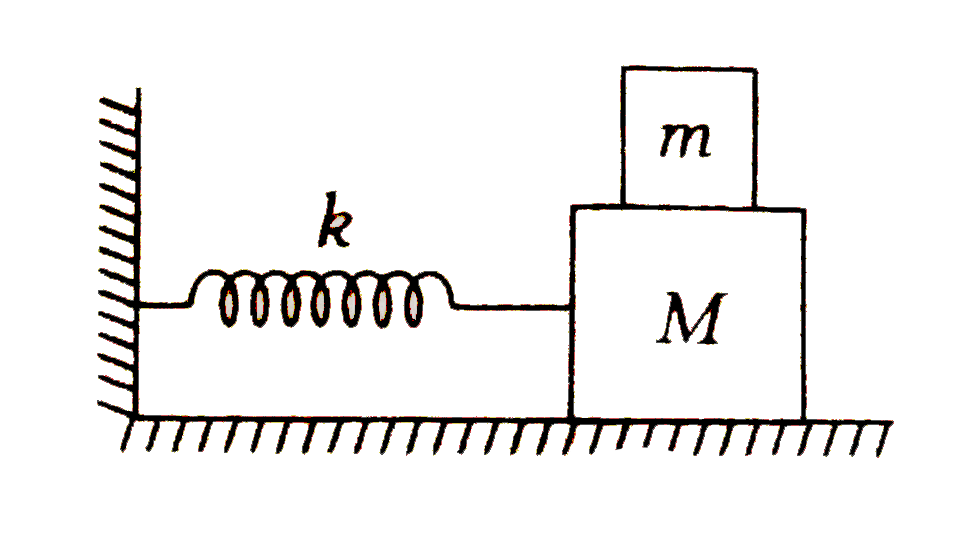At dynamic equilibrium the reaction on both sides occur at the same rate and the mass on both sides of the equilibrium does not undergo any change. This condition can be achieved only when the value of ΔG is
−1
+1
+2
0
The correct Answer is:D
To determine the value of ΔG (Gibbs free energy) at dynamic equilibrium, we can follow these steps:
1. Understanding Dynamic Equilibrium:
- At dynamic equilibrium, the rate of the forward reaction equals the rate of the reverse reaction. This means that the concentrations of reactants and products remain constant over time, even though both reactions are still occurring.
2. Gibbs Free Energy (ΔG):
- Gibbs free energy (ΔG) is a thermodynamic potential that can be used to predict the direction of a chemical reaction. The sign of ΔG indicates whether a reaction is spontaneous or non-spontaneous.
3. Conditions for Spontaneity:
- If ΔG < 0, the reaction is spontaneous (it can proceed without external energy).
- If ΔG > 0, the reaction is non-spontaneous (it requires external energy to proceed).
4. Equilibrium Condition:
- At equilibrium, the system is in a state where the forward and reverse reactions occur at the same rate. This implies that there is no net change in the concentrations of reactants and products.
5. Value of ΔG at Equilibrium:
- At dynamic equilibrium, the system is in a stable state where the energy change associated with the system is zero. Therefore, the value of ΔG at equilibrium is:
ΔG=0
6. Conclusion:
- Thus, the condition of dynamic equilibrium can only be achieved when ΔG is equal to zero.
Final Answer:
The value of ΔG at dynamic equilibrium is 0.
---
- At dynamic equilibrium, the rate of the forward reaction equals the rate of the reverse reaction. This means that the concentrations of reactants and products remain constant over time, even though both reactions are still occurring.
- Gibbs free energy (ΔG) is a thermodynamic potential that can be used to predict the direction of a chemical reaction. The sign of ΔG indicates whether a reaction is spontaneous or non-spontaneous.
- If ΔG < 0, the reaction is spontaneous (it can proceed without external energy).
- If ΔG > 0, the reaction is non-spontaneous (it requires external energy to proceed).
- At equilibrium, the system is in a state where the forward and reverse reactions occur at the same rate. This implies that there is no net change in the concentrations of reactants and products.
- At dynamic equilibrium, the system is in a stable state where the energy change associated with the system is zero. Therefore, the value of ΔG at equilibrium is:
ΔG=0
- Thus, the condition of dynamic equilibrium can only be achieved when ΔG is equal to zero.
The value of ΔG at dynamic equilibrium is 0.
Topper's Solved these Questions
- BOOK - NCERT FINGERTPS ENGLISHCHAPTER - THERMODYNAMICSEXERCISE - HIGHER ORDER THINKING SKILLS8videos
THERMODYNAMICS
- BOOK - NCERT FINGERTPS ENGLISHCHAPTER - THERMODYNAMICSEXERCISE - NCERT EXEMPLAR PROBLEMS11videos
THERMODYNAMICS
- BOOK - NCERT FINGERTPS ENGLISHCHAPTER - THE S-BLOCK ELEMENTSEXERCISE - Assertion And Reason15videos
THE S-BLOCK ELEMENTS
Similar Questions
The equilibrium state can be attained from both sides of the chemical reaction.
View SolutionWhen patches of phloem occur on both sides of xylem, then vascular bundle is called as
View SolutionAssertion:- The reaction quotient Q, has the same presentation form as the equilibrium constant K and Q is evaluated using any given concentrations of the species involved in the reaction, and not necesssarily equilibrium concenetrations.
Reason:- If the numerical value of Q is not the same as the value of equilibrium constant, that time reaction will never proceed.View SolutionThe following are some statements about chemical equilibrium.
(A) The rate of forward reaction is equal to the rate of backward reation.
(B) The chemical equilibrium can be established from reactant side only.
(C) The concentration of the reactants and products remain same with time. The correct statements areView SolutionRead the following paragraph and answer the questions given below ,
Stable equilibrium is of various types . Mechanical equilibrium is achieved when all particles are at rest and total potential energy of the system is minimum . At any stage where particles are at rest but the system is not at stable equilibrium as it can reduce its potential energy by reverting to another position, is called metastable equilibrium . Thermal equilibrium is result from the absence of temperature gradients in the system. Chemical equilibrium is obtained when no further reaction occurs between reacting substances, i.e forward and reverse rates of reaction are equal.
When steam with solid iron at high temperature Fe3O4(s) and hydrogen gas are produced . But the reaction never goes to completion. This is because as the products are formed the reaction proceeds in reverse direction and when rate of reverse reaction is equal to rate of forward reaction , the concentration of reactants and products become constant and equilibrium is reached.
The primary objective of the passage isView SolutionRead the following paragraph and answer the questions given below ,
Stable equilibrium is of various type . Mechanical equilibrium is achieved when all particles are at rest and total potential energy of the system is minimum . At any stage where particles are at rest but the system is not at stabel equilibrium as it can reduce its potential energy by reverting to another position, is called metastable equilibrium . Thermal equilibrium is result from the absence of temperature gradients in the system. chemical equilibrium is obtained when no further reaction occurs between reacting substances, i.e forward and reverse rates of reaction are equal. when steam with solid iron at high temperature Fe3O4(s) and hydrogen gas are produced . But the reaction never goes to completion. this is because as the products are formed the reaction proceeds in reverse direction and when rate of reverse reaction is equal to rate of forward reaction , the concentration of reactants and products become constant and equilibrium is reached.
The correct expression for equilibrium constant of the reaction, taken as an example of chemical equilibrium in the above passage isView SolutionRead the following paragraph and answer the questions given below ,
Stable equilibrium is of various types . Mechanical equilibrium is achieved when all particles are at rest and total potential energy of the system is minimum . At any stage where particles are at rest but the system is not at stable equilibrium as it can reduce its potential energy by reverting to another position, is called metastable equilibrium . Thermal equilibrium is result from the absence of temperature gradients in the system. Chemical equilibrium is obtained when no further reaction occurs between reacting substances, i.e forward and reverse rates of reaction are equal. When steam with solid iron at high temperature Fe3O4(s) and hydrogen gas are produced . But the reaction never goes to completion. This is because as the products are formed the reaction proceeds in reverse direction and when rate of reverse reaction is equal to rate of forward reaction , the concentration of reactants and products become constant and equilibrium is reached.
When two reactants (A) and (B) are mixed to give products (C) and (D) the concentration quotient (Q) at initial stage of the reactionView SolutionRead the following paragraph and answer the questions given below ,
Stable equilibrium is of various types . Mechanical equilibrium is achieved when all particles are at rest and total potential energy of the system is minimum . At any stage where particles are at rest but the system is not at stable equilibrium as it can reduce its potential energy by reverting to another position, is called metastable equilibrium . Thermal equilibrium is result from the absence of temperature gradients in the system. Chemical equilibrium is obtained when no further reaction occurs between reacting substances, i.e forward and reverse rates of reaction are equal. when steam with solid iron at high temperature Fe3O4(s) and hydrogen gas are produced . But the reaction never goes to completion. this is because as the products are formed the reaction proceeds in reverse direction and when rate of reverse reaction is equal to rate of forward reaction , the concentration of reactants and products become constant and equilibrium is reached.
When a matchbox is balanced on its edge, it is unstable and will tumble to a more stable position resting on its face so as to acquire minimum potential energy. This is an example ofView SolutionA body of mass 0.10kg is attached to vertical massless spring with force constant 4.0×103N/m. The body is displaced 10.0cm from its equilibrium position and released. How much time elapses as the body moves from a point 8.0cm on one side of the equilibrium position to a point 6.0cm on the same side of the equilibrium position ?
View SolutionA mass M is attached to a horizontal spring of force constant k fixed one side to a rigid support as shown in figure. The mass oscillates on a frictionless surface with time period T and amplitude A. When the mass M is in equilibrium position, another mass m is gently placed on it. When will be the new amplitude of ocillation?

 View Solution
View Solution

